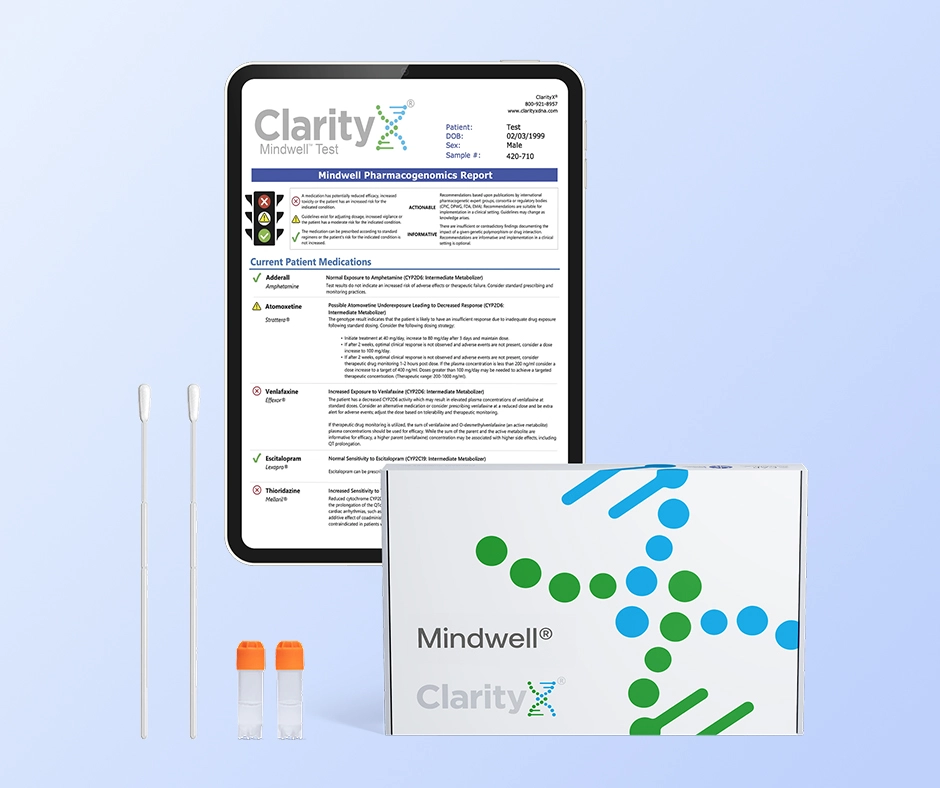Key Highlights
- Atorvastatin and rosuvastatin both work well for lowering high cholesterol levels and can help prevent heart disease.
- Rosuvastatin may be less likely to contribute to certain side effects, like muscle pain or weakness.
- When it comes to choosing between atorvastatin and rosuvastatin, it really depends on factors like your cholesterol level, your age, and any side effects you might experience.
- Both these medications are okay to use in adults and kids who have certain conditions like familial hypercholesterolemia.
- Talk with your doctor to determine which statin is the best fit for your needs.
Introduction
Many people around the world have high cholesterol. It's a big reason why some folks end up with cardiovascular disease, which is actually the leading cause of death on a global scale. To fight this, doctors often prescribe medicines called statins to bring down those high cholesterol levels and cut down the risk of heart problems.
Two well-known statins are atorvastatin (also known as Lipitor) and rosuvastatin (Crestor). High-intensity statins are generally the preferred choice for LDL cholesterol-lowering treatment in people with established coronary artery disease. You might be wondering, though, which one you should choose.
In our blog today, we're going to take a closer look at both atorvastatin and rosuvastatin. We'll talk about what they have in common, how they differ from each other including their effectiveness and adverse effects, along with things patients should think about before choosing one over the other. This information can help you feel more comfortable when discussing your treatment options with your healthcare providers.
Understanding Statins: The Basics
Statins are a type of medicine known as HMG-CoA reductase inhibitors. They work by stopping an enzyme called HMG-CoA reductase, which is crucial for making cholesterol in the liver. By doing this, statins lower the amount of low-density lipoprotein (LDL) cholesterol, often referred to as "bad" cholesterol, in your blood.
With too much LDL cholesterol, plaque can build up inside your arteries, making it easier for heart disease and stroke to occur. Statins, which work by blocking the enzyme that synthesizes cholesterol, are usually given to people with high levels of LDL cholesterol because they can significantly reduce total and LDL cholesterol levels—sometimes by more than half—depending on how much you take and how your body reacts.
However, taking statins doesn't mean you can ignore other healthy habits like eating well and exercising regularly. These drugs should be part of a bigger plan that includes these lifestyle changes if you're trying to manage high cholesterol or reduce your risk for heart problems.
Your healthcare provider will look at things like how many bad lipid proteins (like LDL) you have in your system, along with any history of cardiovascular issues, before deciding if statin therapy is right for you—and what dosage would work best.
What Are Statins?
Statins are medicines that doctors often give to people with high cholesterol, especially when they're worried about cardiovascular disease. These drugs work by blocking a specific enzyme in the liver that's important for making cholesterol.
With too much LDL cholesterol, which is the "bad" type, there can be trouble. It sticks around in our arteries and can lead to serious problems like heart attacks or strokes because it builds up and makes it hard for blood to get through.
By focusing on lowering LDL cholesterol in the liver, statins help keep levels down in your blood. This plays a big part in cutting down risks tied to cardiovascular issues such as getting hit by sudden heart troubles or strokes.
Even though these meds do wonders for managing cholesterol levels, they don't mean you can skip out on living healthily. They usually come into play alongside eating better, moving more, and maybe other treatments if needed, so you have all bases covered when dealing with high cholesterol.
Role of Statins in Cholesterol Management
Statins are a mainstay in therapy for dealing with high cholesterol, including Heterozygous Familial Hypercholesterolemia (HeFH) and Atherosclerotic Cardiovascular Disease (ASCVD). These conditions are caused by high levels of LDL cholesterol, which can lead to the development of cholesterol plaque in the arteries. This plaque can make it difficult for blood to flow and increase the risk of heart disease and stroke. Therefore, statins play a crucial role in both primary and secondary prevention of atherosclerotic events.
By targeting LDL cholesterol production in the liver, statins help keep these levels down. With lower LDL cholesterol levels, you're less likely to have problems like heart attacks or strokes.
Statins also play a part in making sure plaques don't get worse in your arteries. They even help cool down inflammation, which may make blood clots less likely to form.
Doctors usually suggest taking statins alongside making some healthy changes in how you live life—like eating right, staying active, and ditching nicotine products—and keeping an eye on other things that could be risky for your health, such as high blood pressure or diabetes.
So by using both approaches—the medicine from healthcare providers plus lifestyle tweaks—you can really fight back against high cholesterol and boost your overall cardiovascular health while lowering the chances of developing coronary artery disease.
Atorvastatin and Rosuvastatin: An Overview
Atorvastatin and rosuvastatin are two drugs often given out by doctors to help with cholesterol. They're part of the same drug class, meaning they work in a similar way by stopping the liver from making too much cholesterol.
Atorvastatin (Lipitor) comes in strengths ranging from 10 mg up to 80 mg. Rosuvastatin (Crestor) is available in strengths ranging from 5 mg to 40 mg. Starting doses often depend on factors like initial LDL cholesterol levels and assessments of the overall risk of developing cardiovascular disease.
Statin therapy is measured by ‘intensity.’Both these medications play a big role in clinical practice for managing high cholesterol levels effectively and can be dosed to achieve moderate- to high-intensity statin therapy.
Key Features of Atorvastatin
Atorvastatin, which you might know as Lipitor, is among the most commonly used statins.
Atorvastatin is considered highly effective for making LDL cholesterol levels drop. This can be a huge deal because lowering these levels can cut down on the chances of having serious issues like heart attacks or strokes. Depending on how much you take and your body's reaction, atorvastatin could reduce LDL cholesterol by more than half. These types of LDL reductions are considered high-intensity therapy.
When talking about fighting off high cholesterol and guarding against cardiovascular troubles, the American College of Cardiology says using statins like atorvastatin should be one of the first steps taken.
While taking Atrovstatin usually doesn't cause problems for most folks, there are some who might experience things like muscle pain or stomach upset. Sometimes liver function tests can be altered as well, so your doctor may continue to monitor your liver function.
Key Features of Rosuvastatin
Rosuvastatin (Crestor) is often given to people to help manage high cholesterol and stop heart-related problems before they start. What stands out about this medication is its potency and potentially lower risk of causing side effects like muscle pain or weakness.
Some studies have suggested that rosuvastatin may be more effective in helping patients reach their cholesterol goals.
Despite being powerful, like all medicines, there are times when some people might not react well to rosuvastatin. It’s still important to monitor for things like muscle pain or weakness, and your healthcare providers may continue to monitor liver function to ensure your safety.
With any concerns or if something feels off while taking this statin, talking things over with your healthcare provider should always be your first step.
Comparing Efficacy: Atorvastatin vs. Rosuvastatin
A lot of studies have found that both atorvastatin and rosuvastatin do a good job of bringing down LDL cholesterol levels, which is often called bad cholesterol, as well as reducing the chances of cardiovascular events. These findings were backed by noticeable drops in LDL levels along with better numbers for other fats in the blood, like HDL (good) cholesterol and triglycerides.
Some studies have suggested that when both medications are compared at their maximum dosages, rosuvastatin may help more people reach their cholesterol goals.
However, it's important to remember that how effective statin therapy will be can differ from person to person based on things like your starting point with cholesterol levels before treatment begins or how you respond to medication. Your healthcare provider takes all this into account when deciding which statin might work best for you.
Effectiveness in Lowering LDL Cholesterol
Studies have shown that both atorvastatin and rosuvastatin are good at lowering LDL cholesterol, which is really important for keeping your heart healthy and avoiding diseases like coronary artery disease. For instance, one study in the British Medical Journal looked into how well these two drugs work for people with high cholesterol. They found out that both drugs do a great job of reducing LDL levels, but rosuvastatin might be a bit better. However, rosuvastatin was associated with higher rates of new-onset diabetes and cataract surgeries.
In another piece of research published in Atherosclerosis, scientists checked out how effective these statins were for patients with high cholesterol. Again, they saw that both medications lowered LDL cholesterol effectively, but rosuvastatin resulted in slightly better reductions.
However, it's worth mentioning that not everyone will experience the same benefits from statin therapy because things like your starting cholesterol level, how you respond to treatment, and if you stick to taking your medication can all play a part. When deciding on what’s best for you regarding lowering LDL, healthcare providers take all this into account.
Impact on Heart Disease Risk Reduction
Lowering the chance of getting heart disease is an ultimate goal for people who take statins. Statin therapy, including drugs like atorvastatin and rosuvastatin, has been proven to cut down on cardiovascular problems such as coronary artery disease (CAD).
Many studies have shown how well statins work in making it less likely for someone to get heart disease. For instance, research shared by the American College of Cardiology looked into what happens when patients with stable CAD use atorvastatin or rosuvastatin. This study showed that both statins made big cardiovascular events like heart attacks, strokes, and surgeries needed to improve blood flow happen less often. However, it also found that rosuvastatin carries a higher risk of developing diabetes and cataracts compared to atorvastatin.
These findings are echoed in a secondary analysis of the LODESTAR trial, as published in the British Medical Journal. There is some ongoing discussion as to whether the development of new-onset diabetes is a class effect common among all statins or if rosuvastatin is somewhat unique in raising this risk. Regardless, for individuals with established diabetes, statin therapy is routinely recommended and is seen as highly beneficial for improving long-term survival rates.
It's crucial we remember that taking statins isn't the only way to fight against heart disease risks. Making healthy life choices such as eating the right foods regularly, exercising, stopping nicotine products, and keeping your blood pressure under control play a huge role too.
Side Effects and Safety Profiles
Most people tolerate atorvastatin and rosuvastatin well. However, like all medicines, they can sometimes cause side effects.
Some people might experience issues with statins, such as muscle pain, stomach troubles, and changes in liver enzymes. If these problems persist or worsen over time, it's critical to discuss them with your healthcare provider.
There are also rare but more severe side effects from statins, such as progressive muscle breakdown, harm to the liver, and an uncommon condition known as rhabdomyolysis. If you ever feel really bad muscle pain or weakness or notice your urine is dark-colored, these could be signs of serious trouble needing immediate medical help.
It's worth mentioning that the benefits of using statin therapy to lower the risk of heart-related events often outweigh the risks of potential side effects. When considering statin treatment, your healthcare provider will weigh the likelihood of benefit versus any potential downsides while keeping a close eye on your treatment progress.
Common Side Effects of Atorvastatin
When taking atorvastatin, also known as Lipitor, some people might feel muscle pain, have stomach issues, or notice changes in liver enzyme levels. Muscle discomfort is a common complaint among those on statin therapy like atorvastatin. This could be just a slight annoyance or worsening muscle aches or weakness. On rare occasions, statins can cause muscles to break down in a serious way called rhabdomyolysis, which then might harm the kidneys.
With atorvastatin use, you may also experience gastrointestinal symptoms such as feeling sick to your stomach or diarrhea. These typically resolve fairly quickly and are not severe.
Sometimes using atorvastatin leads to higher liver enzymes indicating possible liver damage, but this doesn’t often lead to serious problems with the liver, and it's something that can go back to normal by itself.
It’s important to talk over any worries about side effects with your healthcare provider if you're taking atorvastatin. They might suggest checking up on how well your liver functions and keeping an eye on muscle enzymes while undergoing statin therapy.
Common Side Effects of Rosuvastatin
When taking Crestor (rosuvastatin), some people might feel stomach pain or get sick to their stomach. While it may be less likely with rosuvastatin, muscle pain is still a potential concern.
With statin therapy, including when using rosuvastatin, some people report feeling sick to their stomach or having abdominal discomfort. These problems don't usually last long and tend to go away after a bit. But if they stick around or get worse, you should talk about it with your doctor.
On very rare occasions, rosuvastatin can cause something really serious called rhabdomyolysis, where muscles break down badly enough that it could hurt your kidneys. If you ever feel weak in your muscles or have intense pain along with dark-colored urine, getting help right away is crucial.
If any side effects occur while you're taking rosuvastatin, it's important to discuss them with a healthcare professional. They might suggest checking how well your liver works periodically and testing for muscle health during treatment.
Patient Considerations
When choosing the best statin for you, several factors need to be considered. These include your cholesterol level, health history, age, whether you may have any issues with other drugs you're taking, and how well you handle the medication.
Your healthcare provider will think over these points and chat with you about the pros and cons of using either atorvastatin or rosuvastatin. They'll also consider any other meds that might not mix well with statins.
Having a clear talk with your healthcare person about what works for you is key. By doing this together, picking the right statin therapy becomes easier and more tailored to meet your needs.
When to Use Atorvastatin Over Rosuvastatin
Both atorvastatin and rosuvastatin can effectively lower the risk of developing cardiovascular disease. Managing risks is often the primary focus when choosing between the two. Atorvastatin may be chosen by some healthcare providers for patients who:
- Have no history of muscle pain or weakness when using statins.
- Will not be exercising strenuously on a regular basis.
- Do not have a personal history of diabetes.
- May be at an elevated risk of developing cataracts.
The potential for drug interactions is also considered. It’s important to inform your healthcare providers about all the medications you take, including over-the-counter or herbal supplements.
When to Use Rosuvastatin Over Atorvastatin
Rosuvastatin may be a better option for patients who:
- Have a prior history of muscle pain or weakness when using other statins.
- Will be exercising strenuously regularly.
- Have established diabetes.
- Are taking medications that can affect CYP3A4 enzyme.
Both medications can ultimately lower the risk of cardiovascular disease, so a primary goal is limiting any associated risks of therapy.
Dosage and Administration Guidelines
To make sure atorvastatin and rosuvastatin work their best, it's vital to follow the right dosage and how-to-take instructions. Atorvastatin comes as a pill you can swallow in doses like 10 mg, 20 mg, 40 mg, and even up to 80 mg. The exact amount depends on what your body needs based on your lipid levels (fats in your blood), how well you handle the medicine, and what the doctor thinks is best for you. You can take it whenever suits you during the day without worrying about food. It is also safe to drink grapefruit juice while taking rosuvastatin, unlike other statins such as simvastatin and atorvastatin.
With rosuvastatin, things are pretty similar. Initial doses depend on individual needs and can be adjusted to anywhere from 5 mg to 40 mg. It can also be taken during the day at a time that best suits you, with or without food. Some people are discouraged by missed doses if they have been trying to remember to take their medicine in the evenings. While some statins do work better before bed, both atorvastatin and rosuvastatin can be taken earlier in the day and will remain effective.
Recommended Dosages for Atorvastatin
When it comes to figuring out how much atorvastatin someone should take, it really depends on risk factors for cardiovascular disease and initial lipid levels.
The American Heart Association has some advice on using statin therapy for dealing with high cholesterol. If a person has cardiovascular disease caused by atherosclerosis or if their LDL cholesterol is 190 mg/dL or more, the suggested starting dose of atorvastatin is between 40 and 80 mg once every day.
For those whose LDL cholesterol falls in the range of 70 to 189 mg/dL and who have a risk higher than 7.5% of getting cardiovascular disease within ten years, starting off with an atorvastatin dose between 20 and 40 mg daily is recommended.
Depending on how well the patient responds to treatment and can tolerate it, these dosages might be changed up a bit over time. It's important to listen closely to your healthcare provider's instructions and keep checking your lipid levels regularly so you know that your treatment plan is working as intended.
Recommended Dosages for Rosuvastatin
Depending on what a person needs and their lipid levels, the amount of rosuvastatin they should take can be different. Research has found that this medicine is really good at lowering LDL cholesterol and making overall lipid profiles better. The doses people might need to take every day could be anywhere from 5 mg to 40 mg, based on how well someone responds to it and if they can handle it without problems.
When deciding where to start with the dosage, healthcare providers consider things like a patient's lipid levels and risk for heart issues. It's vital for patients to keep checking their lipid levels so the dose can be changed if necessary, aiming for the best results from treatment. Sticking closely to what your healthcare provider says about how much rosuvastatin you should take is important for making sure it works as well as possible.
When considering treatment options your genetics can also play a vital role in determining which medications will be best suited for you.
Pharmacogenomic (PGx) testing is a precision medicine tool that analyzes your DNA to predict how your body will process and respond to specific medications. By examining genetic variants primarily those affecting liver enzymes the test reveals if you are likely to metabolize a drug too slowly (increasing the risk of severe side effects) or too quickly (making the medication ineffective).
This genetic insight allows doctors to move away from a "trial and error" prescribing method, helping them select the right drug and the right dose from the start to maximize treatment success while minimizing adverse reactions.
A simple test can help reduce the trial and error process associated with finding the right medication. Find out more by visiting www.clarityxdna.com
Cost Comparison
When looking at the difference in price between atorvastatin and rosuvastatin, it's crucial to keep a few things in mind. Both of these medications come as brand-name drugs but are also available in generic forms. The amount you'll pay for either drug can change based on how strong the dosage is, how much you're getting, and whether your insurance will help cover some of the cost. To try and save some money, it's a good idea to check prices at various pharmacies and see what kind of support your insurance offers.
Since taking statins like these often requires regular refills, it makes sense to consider both cost and insurance beforehand when choosing between atorvastatin and rosuvastatin.
Pricing and Insurance Coverage Options
When it comes to the cost and insurance details for atorvastatin and rosuvastatin, things can change based on where you buy them and your healthcare plan. Both of these medications can be found as generics, which saves you some money. It's a good idea to shop around at different pharmacies to see who offers the best price or if they have any deals or programs that could help lower the cost. In general, the cash prices of both medications are often about $20 per month.
With insurance playing a big part in how much you pay, it's helpful to talk with your healthcare provider and check with your insurance company. They'll let you know about any copays, deductibles, and what their formulary covers so you're better informed when choosing between atorvastatin and rosuvastatin.
Conclusion
To wrap things up, it's really important to know the differences between atorvastatin and rosuvastatin when you're trying to pick the best statin for keeping your cholesterol in check. Each one comes with its own advantages and possible downsides that you need to think about. You should have a chat with your healthcare provider to figure out which drug fits well with what you need to protect your health and what you're aiming for.
By learning about their effectiveness, safety, what patients should consider before taking them, cost, and recommended doses, you can choose wisely and in a way that’s good for your overall health. Always put your health first while deciding on medications.
Resources:
https://dailymed.nlm.nih.gov/dailymed/drugInfo.cfm?setid=6985e729-d963-4f32-89a1-727472b86daa
https://dailymed.nlm.nih.gov/dailymed/drugInfo.cfm?setid=73cefb0b-1747-4fe0-b252-377f4ed94c6f
https://www.lipidjournal.com/article/S1933-2874(22)00245-8/fulltext
https://www.ncbi.nlm.nih.gov/books/NBK542212/
https://www.acc.org/latest-in-cardiology/articles/2018/12/12/07/23/statin-safety-and-adverse-events
https://pubmed.ncbi.nlm.nih.gov/35997723/
https://www.atherosclerosis-journal.com/article/S0021-9150(06)00744-1/abstract
https://www.webmd.com/cholesterol-management/heterozygous-familial-hypercholesterolemia
https://my.clevelandclinic.org/health/diseases/21184-rhabdomyolysis






